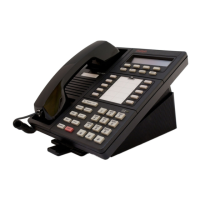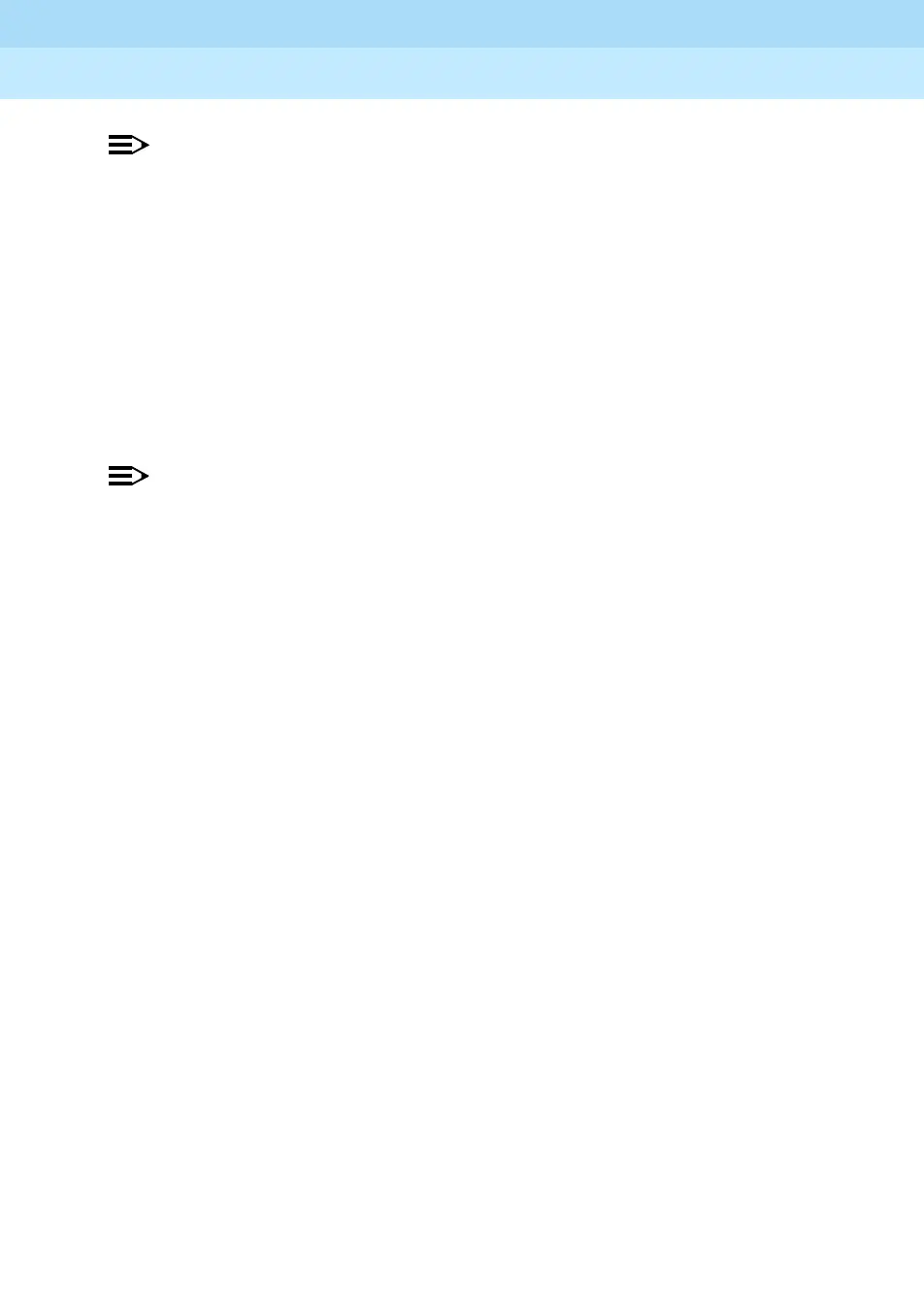MERLIN LEGEND Communications System Release 6.1
Feature Reference
555-661-110
Issue 1
August 1998
Features
Page 713Uniform Dial Plan Features
NOTE:
In earlier releases, prior to 6.0, intersystem calls were made by dialing a
pool access code followed by the extension number. With Release 6.0 and
later systems, a reference list is programmed on the local system to find
non-local extensions and direct calls to them.
When you specify a non-local extension range, the system verifies that extension
numbers on the local system do not conflict with those programmed on a
networked switch. For example, if Extension 110 exists in the local system,
Extension 1100 cannot be included in the extension range for a non-local
networked system. The local system also checks to see whether new extension
number ranges conflict with existing ranges programmed for non-local systems.
NOTE:
The Non-Local UDP Administration Form in the Installation Specification
should be kept accessible for programming. Contact your Lucent
Technologies representative for a generated copy for your network.
When setting up your network for intersystem calling, keep the following important
points in mind:
■ You cannot program the local ARS access code or pool dial-out codes into
non-local dial plan extension ranges; the system blocks this programming.
Non-local extension range numbers cannot begin with the local ARS
access code. If, for example, the ARS access code begins with 9 and a
non-local dial plan extension range is 9230–9330, programming is blocked.
You must not program the ARS access code of a non-local system into the
non-local dial plan because it poses a security risk; it is best if all networked
systems assign the same ARS access code.
■ The Remote Access codes of non-local systems can be included in the
non-local dial plan for the convenience of technicians providing technical
support or for users to program their forwarding home extensions on a non-
local system. Each system should use a unique and unambiguous Remote
Access code.
■ Your non-local dial plan programming has no effect on the remote
system(s) it references. Local dial-plan changes made at a system do not
automatically update the non-local dial plan numbering plans of networked
systems. To avoid misrouting, it is recommended that manual adjustments
to the non-local dial plans made by network system managers be made at
the same time. System managers should provide ranges wide enough to
avoid problems for future non-local dial plan changes.
■ In most cases, the extension numbers programmed into the non-local dial
plan should be the same extension numbers that users at remote systems
dial to reach one another within their systems. The main exception occurs
when non-local dial plan numbers refer to extensions on DEFINITY ECS or
DEFINITY ProLogix Solutions systems, which include five digits.

